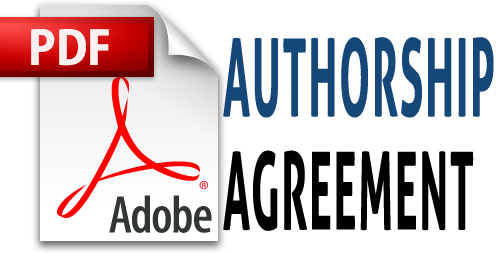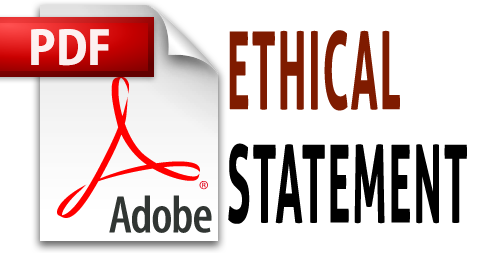PENGARUH PENGGUNAAN YOUTUBE TERHADAP MOTIVASI BELAJAR DAN HASIL BELAJAR MAHASISWA
 Hamim Tohari(1*),
nFn Mustaji(2),
Bachtiar S Bachri(3)
Hamim Tohari(1*),
nFn Mustaji(2),
Bachtiar S Bachri(3)
(1) Politeknik Negeri Madiun
(2) Fakultas Ilmu Pendidikan Universitas Negeri Surabaya
(3) Fakultas Ilmu Pendidikan Universitas Negeri Surabaya
(*) Corresponding Author
 Abstract viewed : 11110
|
Abstract viewed : 11110
|  PDF downloaded : 2787
PDF downloaded : 2787
Abstract
This study aims to describe the learning motivation of students who use Youtube as a source of learning, knowing the effect of using Youtube on learning outcomes, and knowing the effect of student learning motivation that uses Youtube as a learning resource by utilization of learning outcomes. This study uses an experimental method in learning database design courses. The results of data processing show that student learning motivation in the category is very good. The results of the sign test showed a difference in learning outcomes between the control class and the experimental class. The results of the Linear Regression test indicate a significant influence between learning motivation and student learning outcomes.
Abstrak
Penelitian ini bertujuan mendeskripsikan motivasi belajar mahasiswa yang menggunakan Youtube sebagai sumber belajar, mengetahui pengaruh penggunaan Youtube terhadap hasil belajar, dan mengetahui pengaruh motivasi belajar mahasiswa yang menggunakan Youtube sebagai sumber belajar by utilization terhadap hasil belajar. Penelitian ini menggunakan metode eksperimen pada pembelajaran mata kuliah perancangan basisdata. Hasil pengolahan data diketahui bahwa motivasi belajar mahasiswa dalam kategori sangat baik. Hasil uji sign test menunjukkan adanya perbedaan hasil belajar antara kelas kontrol dan kelas eksperimen. Hasil uji Regresi Linier menunjukkan adanya pengaruh yang signifikan antara motivasi belajar dengan hasil belajar mahasiswa.
Keywords
References
Anderson II, James C. 2007. Effect of Problem-Based Learning on Knowledge Acquisition, Knowledge Retention, and Critical Thinking Ability of Agriculture Students in Urban Schools. Dissertation Doctor of Philosophy. University of Missouri- Columbia.
Angko, N.,& Mustaji. 2013. Pengembangan Bahan Ajar dengan Model ADDIE untuk Mata Pelajaran Matematika Kelas 5 SDS Mawar Sharon Surabaya. Kwangsan, Jurnal Teknologi Pendidikan, 1(1), 1. DOI: https://doi.org/10.31800/jtp.kw.v1n1.p1--15
Astuti, Endang Sri. 2010. Bahan Dasar Untuk Pelayanan Konseling Pada Satuan Pendidikan Menengah Jilid I. Jakarta : Grasindo.
Blaskova, M. 2014. Influencing Academic Motivation, Responsibility and Creativity, Procedia - Social and Behavioral Sciences Vol. 159, pp. 415-425.
Budiargo & Dian. 2015. Berkomunikasi Ala Net Generation. Jakarta: Elex Media Komputindo
Burke, S.C., Snyder, S., Rager, R.C. 2009. An Assessment of Faculty Usage of YouTube as a Teaching Resource. The Internet Journal of Allied Health Sciences and Practice. 7(1). Diperoleh dari http://ijahsp.nova.edu/.
Brown, H. D. 1987. Principles of Language Learning and Teaching. (2nd ed.). Englewood Cliffs, New Jersey: Prentice Hall.
Che Ku Nuraini, C. K. M., Faaizah, S., & Naim, C. P. 2014. Personalized Learning Environment ( PLE ) Experience in the 21st Century. 4th World Congress on Information and Communication Technology.
Chintalapati, N., Daruri, V.S.K. 2016. Examining the Use of YouTube as a Learning resource in higher education: Scale develoment and Validation of TAM model, Telematics and Informatics, doi: http://doi.org/10.1016/j.tele.2016.08.008.
Degeng, I. N. S. 2001. Pedoman Penyusunan Bahan Ajar. Malang: LP3 Universitas Negeri Malang.
Faiqah, F., Nadjib, M., & Amir, A.S. 2016. Youtube Sebagai Sarana Komunikasi Bagi Komunitas Makasarvidgram, Vol.5, No 2, hal. 259-272. Diperoleh dari http://journal.unhas.ac.id/index.php/kareba/article/view/1905/1063.
Garavan Thomas, Carbery Ronan, O’Malley Grace and O’Donnell David, 2010, Understanding participation in e-learning in organizations: a large scale empirical study of employees, International Journal of Training and Development, Vol.14, issue 3, pp. 155-168.
Hamalik Oemar. 2005. Proses Belajar Mengajar. Jakarta : Bumi Aksara.
Keller, John M. 2008. First principles of motivation to learn and learning. Vol. 29, issue 2, pp. 175-185.
Keller John & Suzuki Katsuaki, 2004). Learner motivation and e-learning design: A multinationally validated process, Journal of Educational Media, Vol. 29, issue 3, pp. 229-239.
Kim Kyong-Jee and W. Frick Theodore. 2011. Changes in Student Motivation during Online Learning, Journal of Educational Computing Research, Vol. 44, pp. 1-23.
Koesnandar. 2013. Pengembangan Model Pendayagunaan Teknologi Informasi dan Komunikasi Untuk Pendidikan di Daerah Terpencil, Tertinggal dan Terdepan. Kwangsan: Jurnal Teknologi Pendidikan, 1(2), 122. DOI: https://doi.org/10.31800/jtp.kw.v1n2.p122--142
Komalasari, Kokom. (2010). Pembelajaran Kontekstual (Konsep daan Aplikasi). Bandung: Refika Aditama.
Lile, R & Bran, C. 2013. The Assessment Of LearningOutcomes. Aurel Vlaicu University of Arad. Vol. 163, pp. 125-131.
Logan, Rebecca. 2012. Youtube in Perioperative Nursing Education. AORN Journal, DOI: http://doi.org/10.1016/j.aorn.2012.01.023.
Meiristiya, Vivin. (2016). Pengaruh Sumber Belajar (Learning Resources by Design dan Learning Resources by utilization) Terhadap Prestasi Belajar Siswa pada Mata Pelajaran Sejarah Kelas X IPS di SMA Negeri 2 Mojokerto. AVATARA, e-Journal Pendidikan Sejarah. Vol.4, No. 3, hal. 1046-1058.
Moghavvemi, S., et al. (2018). Social media as a complementary learning tool for teaching and learning: The case of youtube. The International Journal of Management Education Vol.16,pp. 37-42.
Molenda, Janueszewski and Alan. 2008. Edicatioanl Technology A Definition with Comentary. New York: lawrence erlbaum associates.
Mulyasa. 2003. Kurikulum Berbasis Kompetensi. Bandung: Remaja Rosdakarya.
Najib, A., Sulhadi, & Sopyan, A. 2013. Pengembangan Perangkat Pembelajaran IPA Berbasis Virtual Laboratory untuk Meningkatkan Keterampilan Berpikir Kritis Siswa. Innovative Journal of Curriculum and Educational Technology. Vol. 2, No 1, hal. 172-176.
Nashar. 2004. Peranan Motivasi dan Kemampuan awal dalam kegiatanPembelajaran. Jakarta: Delia Press.
Rusman. 2016. Pengembangan Model E-Learning untuk Meningkatkan Hasil Belajar Mahasiswa. Kwangsan: Jurnal Teknologi Pendidikan, 4(1), 1. DOI: https://doi.org/10.31800/jtp.kw.v4n1.p1--15
Singh, et al. 2011. An empirical investigation of student's motivation towards learning quantitative courses. The International Journal of Management Education. Vol. 15, pp. 47-59.
Sudjana, Nana. 2011. Penilaian Proses Belajar Mengajar. Bandung: Remaja Rosdakarya.
Snelson Chareen. 2011. YouTube across the Disciplines: A Review of Literature. MERLOT Journal of Online Learning and Teaching. Vol. 7, issue 1, pp. 159-169.
Susanto, A. 2013. Teori Belajar & Pembelajaran di Sekolah Dasar. Jakarta: Kencana Prenada Media Group.
Refbacks
- There are currently no refbacks.
Copyright (c) 2019 Hamim Tohari, nFn Mustaji, Bachtiar S Bachri

This work is licensed under a Creative Commons Attribution-NonCommercial 4.0 International License.
Kwangsan Indexed By
Kwangsan: Jurnal Teknologi Pendidikan diterbitkan oleh Balai Besar Guru Penggerak (BBGP) Prov. Jawa Timur.
Kementerian Pendidikan dan Kebudayaan
Alamat Redaksi:
Jl. Mangkurejo, Ds. Kwangsan, Sedati - Sidoarjo.
Telp 0318911373 Fax. 0318911392
Email: jurnal.kwangsan@kemdikbud.go.id & jurnalkwangsan@dikbud.belajar.id






























